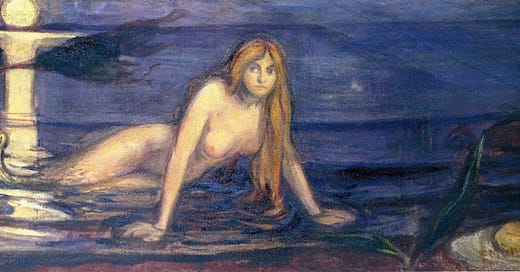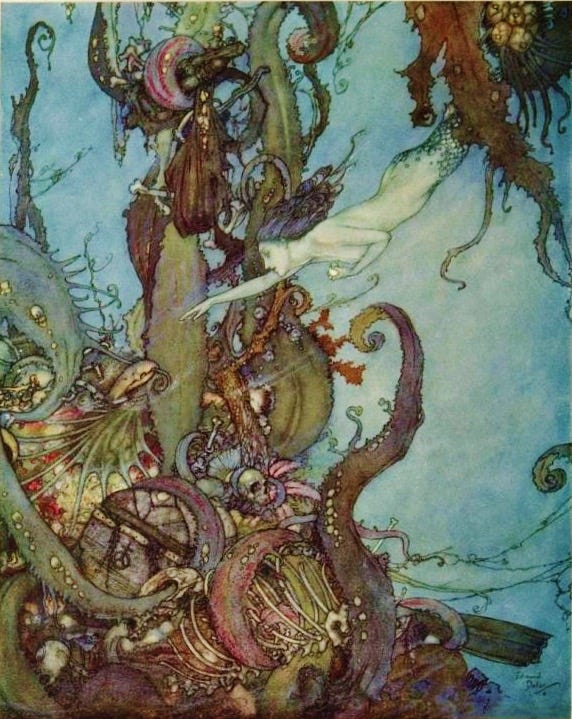A Painter, The Sea, and The Mermaid Who Haunts All of Us
Like many of us, Edvard Munch was fascinated by the sea and the mermaid his whole life
The image is iconic: a person on a bridge, hands cupping face, screaming. Norwegian painter Edvard Munch (1863 -1944) is most famous for The Scream, painted in 1893, and other haunted, haunting, melancholic works over a longer-than-sixty-year career. But he also had a little-known and career-long interest in mermaids, which reached its pinnacle in 1896 with his work, The Mermaid.
Painted as a decorative element in a private home outside Oslo in 1896, the painting was out of public view for more than a century. Since the work was acquired by the Philadelphia Museum of Art in 2003 and put on public display, we can now appreciate the deep, twilight blues and purples of night sea and night sky, the silver-gold orb of moon and the path it traces on the calm surface (a common Munch motif), and the deep browns and greens of a ghostly tree stretched like a cross to the left. We observe a deserted beach, calm but also a place of constant change, of hidden dangers, of a transition between land and sea. We witness a moment of both transformation and trepidation, as a mermaid—auburn-haired, gold-pink fleshed, unselfconsciously naked—pauses in the act of leaving both her ocean world and her mermaid form to enter a world of land and humans.
Mermaids were enjoying a viral moment at the time Munch painted this picture, in a revival of Scandinavian folk tales and as a feature in the works of artists in the Symbolist movement, in which symbols represent universal truths. What truths does the mermaid represent? They are avatars of liminality, of beings of both land and sea, nearly human but not. They are representatives of peril, both the terrible but mostly known dangers of the sea and of the terror of things unknown and against which we have no defense. They are manifestations of feminine power which so frightened men they remade society into a repressive patriarchy.
Keep reading with a 7-day free trial
Subscribe to Tesserae to keep reading this post and get 7 days of free access to the full post archives.






